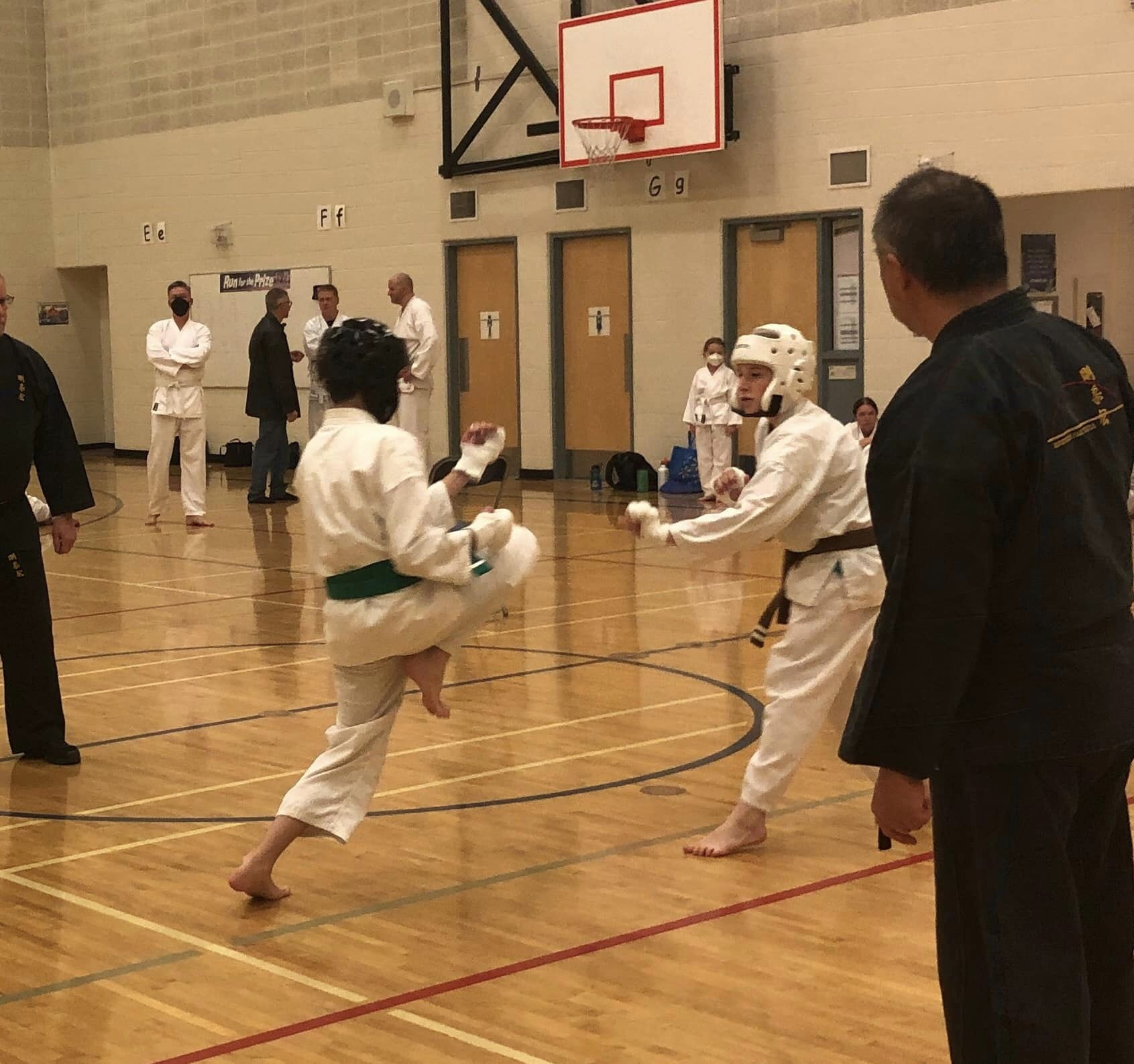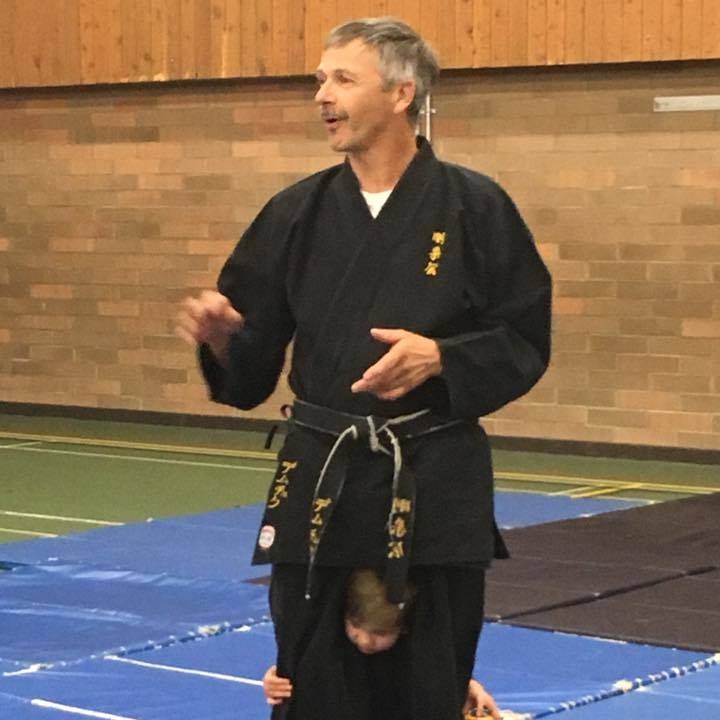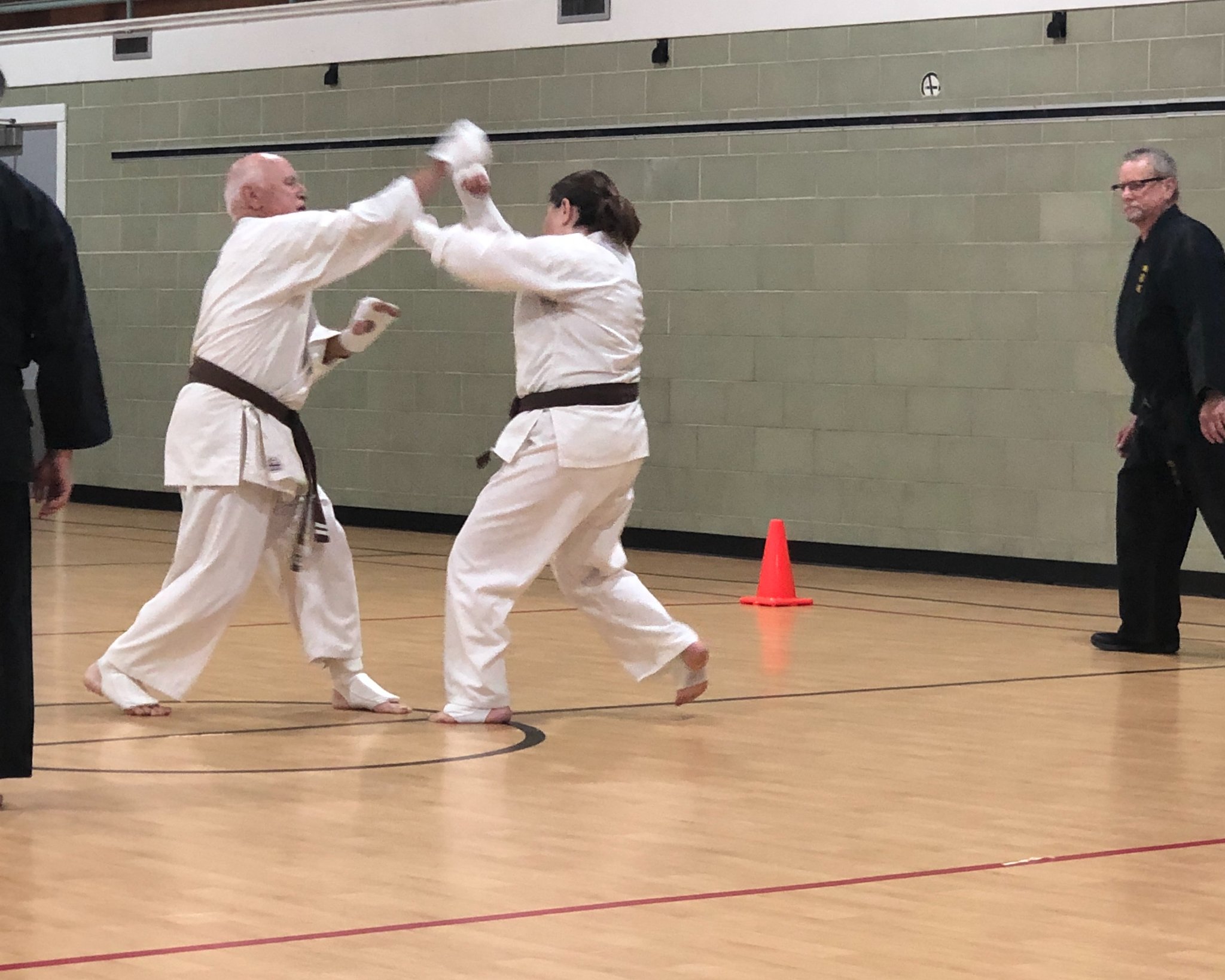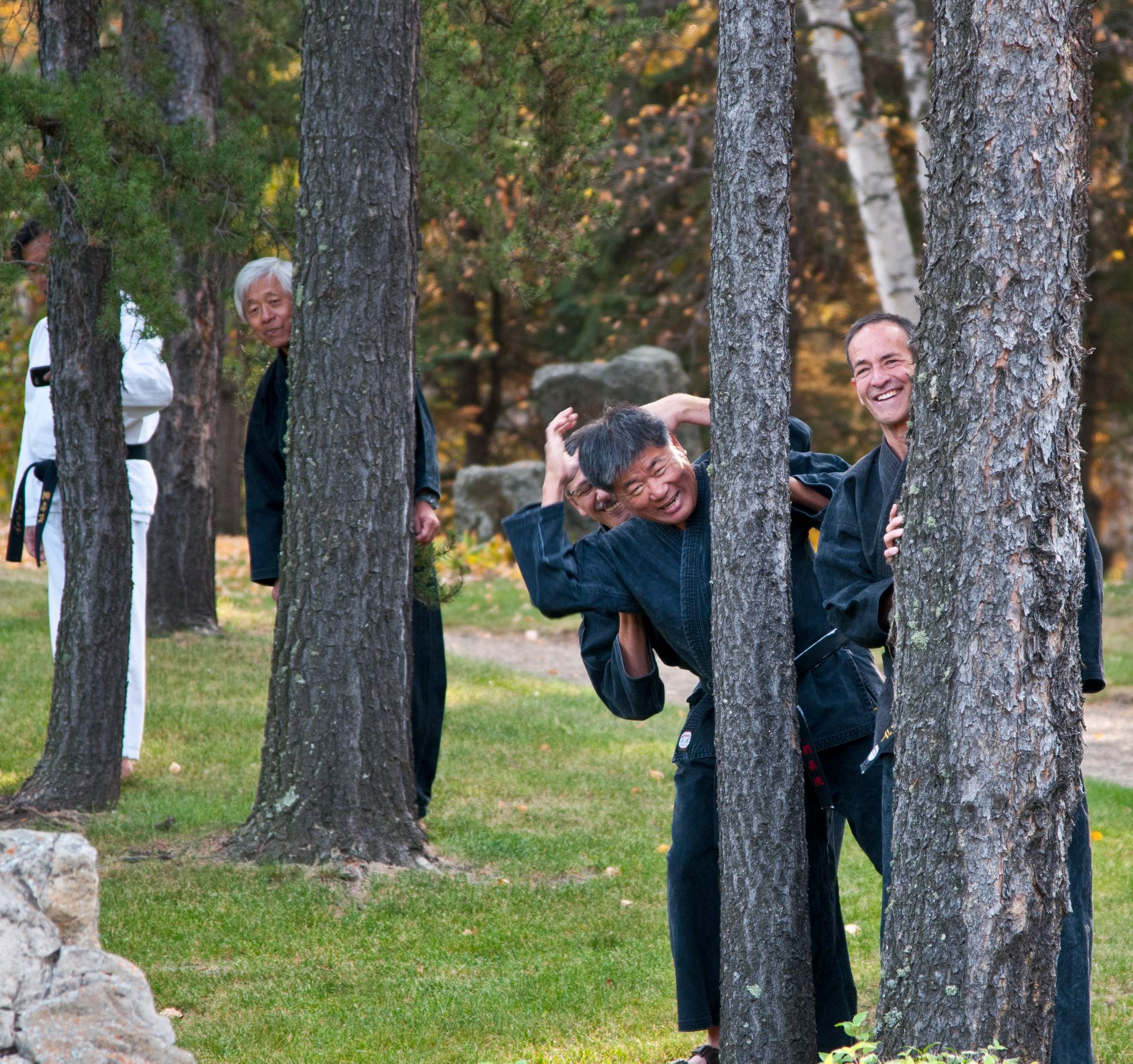Why Practice

If the question "Is the practice of karate beneficial?", is asked of a non-participant their response would be quite different from karate-ka. Responses to the previous question can provide clues about the intent of an individual. Now may be the time to ask yourself the question and judge for yourself the soundness of your reason for learning and practicing karate. Typically, acceptable responses have included physical conditioning, mental conditioning and discipline, personal growth and achievement, self-defense and even competition. We do not judge individuals or their motives for practicing karate. However, when an attitude problem or a conflicting goal becomes apparent, endangering others and compromising the art, it is with regret that we exercise our right to encourage a person to seek fulfillment in another club. It is against our mandate to train people who have the wrong idea about karate. Attitude, manner and general demeanor are important to our club and we seriously consider these characteristics when we invite new members to join.

The person who primarily wants to fight, or who expects a meteoric rise through the belt levels is still encouraged to participate in the martial arts, for he\she will ultimately grow; but, he\she is actively encouraged to seek membership in another school or club. The executive is inclined to be generous when making membership decisions, but will not consciously dilute the physical or ethical standards in order to accommodate people who would endanger the members or the spirit of the club. Generally, the participation rate reflects the intensity of the individual's commitment to learning karate. The training process is lengthy and physically demanding and few, if any, overnight wonders exist. One need not be a natural athlete to progress in karate, nor is one expected to be in the best physical condition initially. One does require a commitment to themselves, the club and the art in order to succeed. Attendance, though important as an indicator of the level of interest and motivation, is not the sole means of gauging an individual's suitability in our club. However, if one wishes to participate in belt tests or gradings, a seventy percent attendance record is required. In case of non-severe illness, people are encouraged to attend class to observe and so continue the growth process. Spirit, manner and attitude are characteristics that are valued in our club and it is usually an individual with these attributes who will gain the most from our club. This is also the person from whom the club will benefit. What you put into the workout correlates to the rewards you will reap from karate. Be prepared to apply yourself mentally and physically in each lesson. The proper mental set will help you more than gimmick and mental focusing will reduce injury and error. As a beginner you know your limits, strengths and weaknesses. You are not here to compete with others, but should be honest with yourself and stretch your capacity. Once we get to know you, the instructors and assistant instructors will attempt to push you to your limits and beyond. Our job is to assist you in your development of physical conditioning and the techniques of karate. Your job is to help us gain a better understanding of karate through our teaching. We are interested in helping you attain proficiency in karate fundamentals, fighting and kata and also in guiding you in the ways of karate.

Karate Manner
We are all representatives of the club and of the style of karate we practice. Discipline within the club is strict and may even appear harsh. This type of conditioning has two objectives: 1) to allow every member of the club to extend the proper courtesies to dignitaries. 2) to instill the traditional value of karate. There are traditions or formalities that must be observed outside the club, whether visiting other clubs or for tournaments; and it is easier to maintain protocol through discipline that is habitual rather than only don the guise of order when necessary. More importantly by valuing tradition, protocol and manner, the individual can begin to value the training received. Disciplined minds are more capable of controlling the physical aspects. Discipline, like physical conditioning, requires effort and it is the training that provides maximum results. Discipline is effective in establishing the first sense of awareness of karate. Karate becomes real when it involves training the spirit and refining the personality. On a practical note discipline reduces opportunities for injury and enhances the atmosphere for learning karate in a safe environment. Humility, respect for self and others and recognizing the value in these attributes becomes the cornerstone for karate manner. Life is a journey, with some beginning at different times progressing at their own speed. Karate mirrors life, for we recognize these differences in awarding belt levels [kyu or dan]. However, we all assume a shared identity by participating in the training process and we acknowledge a respect for ourselves and others with a bow “rei” [ray]. Whenever we enter or exit the dojo, we bow. Additionally, during formal opening or closing ceremonies, the group bows to the front to acknowledge that others have gone before us and then bow as a group to each other. Bowing to each other is not to acknowledge the superiority of others but it is an acknowledgement of mutual respect.

Whether being called to assemble as a group (usually with a verbal cue and two claps of the hands), or when called individually, members are expected to acknowledge the request by replying ouso or osu [oh-hss os oose], then quickly (double-time or run) and quietly assume positions in rows. The composition of the row is determined by rank, with the higher levels at the front and each row should have the highest belts furthest from the entrance. During every practice of fundamentals, once the instructor calls a command, every member should be still and silent. If you have to fix your uniform or gi [gey as in key] or wipe perspiration from your forehead, do so at the completion of the fundamental, before the next one is called. When turning to fix your gi, turn to the left to face the rear of the dojo and to return to the front, turn to the right. Never re-arrange your apparel while facing the front or the instructors. Lines are formed and maintained in a military fashion. Straightening of rows is accomplished by glancing to your right in order to align yourself with the person next to you. The proper stance is open-toed [attention] with the arms held close to the body and sword hands pressed to the thighs. No light should pass between your arms and body or hands and thighs. Remember to keep your thumbs 'tucked' in, inside the palm, along the index finger. To initiate a fundamental or kata, begin with the open-toed stance then draw the hands to one fists distance from the groin, right hand under the left. The knuckles of the back of the right hand (index and middle knuckles) are locked to the corresponding knuckles of the palm of the left hand. Pause briefly, then breathe in sharply while making a fist with both hands and slide both heels outward to form a parallel stance. Exhale through the mouth while drawing the hands back to the sides. When the fists reach the sides, push the fists down slightly with the shoulders, tensing the muscles of the shoulders, arms and fists. Then relax and let the arms hang naturally from the shoulders. Whenever addressing a senior student or instructor, it is customary to preface your remarks with ouso or osu. This handy little one-word phrase covers a multitude of situations. It may be used as a greeting, an apology, a form of acknowledgement and in place of excuses. As a general rule, it is safe to apply it when in doubt in any situation. Instructors should be addressed as Sensei [Sen-say], while senior students should be addressed as senpai [sem-pay]. Junior students are referred to as kohai [koe high]. Most senior students dispense with titles and would prefer to be addressed by their given name.

Goals
To improve the quality of participants and maintain healthy growth Sensei Adamson and Sensei Hampson set the following goals: The club would provide the best instruction possible. To do so instructors would continue to train themselves. Each student would be encouraged to develop individually as dictated by his or her own ability and commitment. Karate would be taught because of the love for the art, never for profit. Only students with a positive mental attitude and respect for others would be trained. Anyone acting in a manner that shows malice or wish to hurt other would be refused further membership. Training would be serious but we would not take ourselves seriously. Fun and fellowship would be the rule inside and out of class. Everyone will always be a student regardless of the level attained. The concept that man is like a tree, when growing stops dying starts would be a continuing theme.
